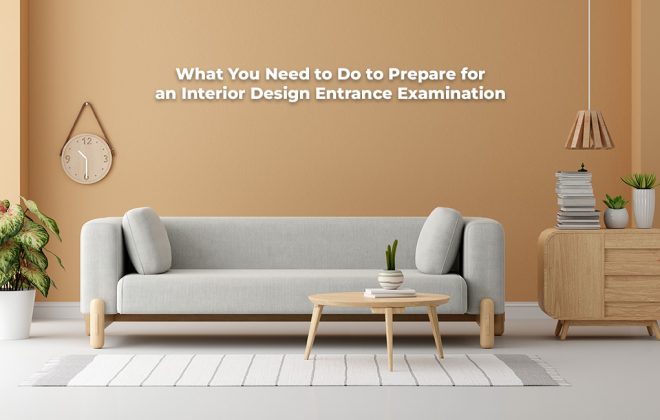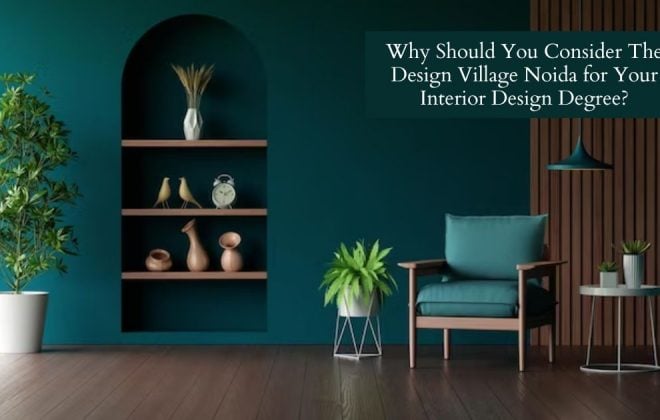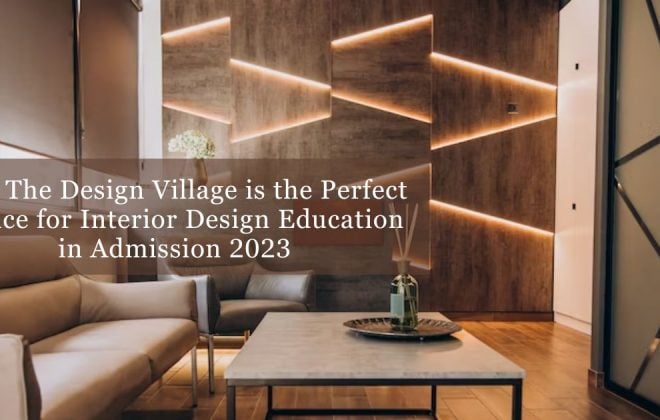Achieving success in the dynamic realm of interior design is an exciting journey, and a pivotal step in this direction involves choosing the right educational path. The Bachelor of Design (B.Des.) in Interior Design program stands out as a beacon for aspiring designers, offering a…
Charting a Prosperous Path in Interior Design with a B.Des. in Interior Design Program
Achieving success in the dynamic realm of interior design is an exciting journey, and a pivotal step in this direction involves choosing the right educational path. The Bachelor of Design (B.Des.) in Interior Design program stands out as a beacon for aspiring designers, offering a comprehensive and enriching curriculum that lays the foundation for a prosperous future in the field. This in-depth exploration will delve into the key aspects of the B.Des in Interior Design, highlighting its significance, curriculum components, career prospects, and the unique blend of creativity and technical expertise it offers.
The Significance of B.Des. in Interior Design
The Bachelor of Design in Interior Design holds a pivotal place in the academic landscape for budding designers aspiring to pursue a rewarding career in interior design. This program is meticulously crafted to equip students with a versatile skill set, blending creativity with technical proficiency. By emphasizing both aesthetic principles and practical design considerations, the B.Des. in Interior Design provides a holistic approach that prepares individuals for the multifaceted challenges of the industry.
Unveiling the Curriculum
The curriculum of the B.Des. in Interior Design is a carefully curated blend of theoretical knowledge and hands-on experiences. Students embark on a journey that covers fundamental design principles, spatial aesthetics, material science, and technology integration. Courses may include design studio projects, where students apply theoretical concepts to real-world scenarios, fostering a deep understanding of the design process.
The program often includes modules on interior design history, design theory, and contemporary trends, providing students with a comprehensive perspective on the evolution of design. Additionally, technical aspects such as construction technology, lighting design, and sustainable practices are integral components of the curriculum, preparing graduates to navigate the ever-evolving landscape of interior design with proficiency and innovation.
Creative Expression and Design Thinking
One distinctive feature of the B.Des. in Interior Design is its emphasis on fostering creative expression and design thinking. Design studios serve as incubators for imagination, encouraging students to conceptualize and bring their ideas to life. Through these hands-on experiences, individuals develop a keen eye for detail, a mastery of spatial arrangement, and the ability to create aesthetically pleasing and functional spaces.
The fusion of creativity and design thinking not only sets the B.Des. in Interior Design apart but also cultivates a mindset that is crucial in addressing the diverse challenges posed by contemporary interior design projects. Graduates emerge not only as skilled designers but as innovative problem-solvers who can navigate the complexities of the design industry.
Technical Proficiency in B.Des. Interior Design
In the realm of interior design, technical proficiency is as crucial as artistic flair. The B.Des. in Interior Design recognizes this and ensures that students gain a solid foundation in the technical aspects of the field. Courses in construction technology delve into the structural elements of design, providing insights into how spaces come together and ensuring that designs are not only visually appealing but also structurally sound.
Material science is another vital component, equipping students with knowledge about various materials and their properties. This understanding empowers designers to make informed decisions about material selection, considering factors such as durability, sustainability, and aesthetic impact.
Beyond the Classroom: Industry Exposure and Internships
The journey toward a successful career in interior design is not confined to the classroom. B.Des. in Interior Design programs often incorporate industry exposure and internships to bridge the gap between academic learning and real-world practice. Collaborations with design firms, participation in design events, and internships with established designers allow students to apply their skills in professional settings.
These practical experiences not only enhance students’ portfolios but also provide valuable insights into the industry’s dynamics. Exposure to different design projects and working alongside seasoned professionals contributes to the development of a well-rounded designer, ready to tackle the challenges of the competitive design landscape.
Career Prospects and Opportunities
Armed with a B.Des. in Interior Design, graduates enter the workforce with a diverse set of skills that make them sought-after professionals in the industry. Career prospects are vast and varied, ranging from working with established design firms to pursuing entrepreneurial ventures. Graduates may find opportunities in residential design, commercial spaces, hospitality, retail, or even specialize in niche areas such as sustainable design or healthcare interiors.
Moreover, the global nature of the design industry opens doors to international opportunities, allowing graduates to contribute to projects on a global scale. The adaptability instilled by the B.Des. in Interior Design program equips individuals to thrive in a profession that is ever-evolving and influenced by cultural, technological, and environmental shifts.
B.Des. Interior Design: A Global Perspective
The influence of design transcends geographical boundaries, and the B.Des. in Interior Design is designed to provide a global perspective. With a curriculum that integrates international design trends and practices, students are prepared to engage with a diverse range of design challenges. This global outlook not only broadens horizons but also enhances the adaptability of graduates in an industry that values cultural sensitivity and a nuanced understanding of design in different contexts.
The Intersection of Technology and Design
In the contemporary design landscape, technology plays a pivotal role in shaping and enhancing the design process. The B.Des. in Interior Design recognizes the symbiotic relationship between technology and design and incorporates relevant technological aspects into the curriculum.
From utilizing computer-aided design (CAD) software for precise drafting to exploring virtual reality (VR) for immersive design experiences, students are exposed to tools that amplify their design capabilities. This integration of technology ensures that graduates are not only well-versed in traditional design methods but are also adept at leveraging cutting-edge tools that define the future of the industry.
Conclusion
In conclusion, the decision to pursue a B.Des. in Interior Design opens the door to a world of possibilities, where creativity meets technical proficiency, and design thinking converges with practical application. The program’s holistic approach, industry exposure, and emphasis on global perspectives equip graduates with the skills needed to navigate the complexities of the design landscape. Aspiring designers choosing the B.Des. in Interior Design embark on a transformative educational journey, where they not only acquire knowledge but also cultivate a mindset that is essential for success in the ever-evolving field of interior design. The blend of creativity, technical expertise, and a global perspective positions graduates for a prosperous future, where they can contribute meaningfully to the aesthetics and functionality of the spaces we inhabit.






